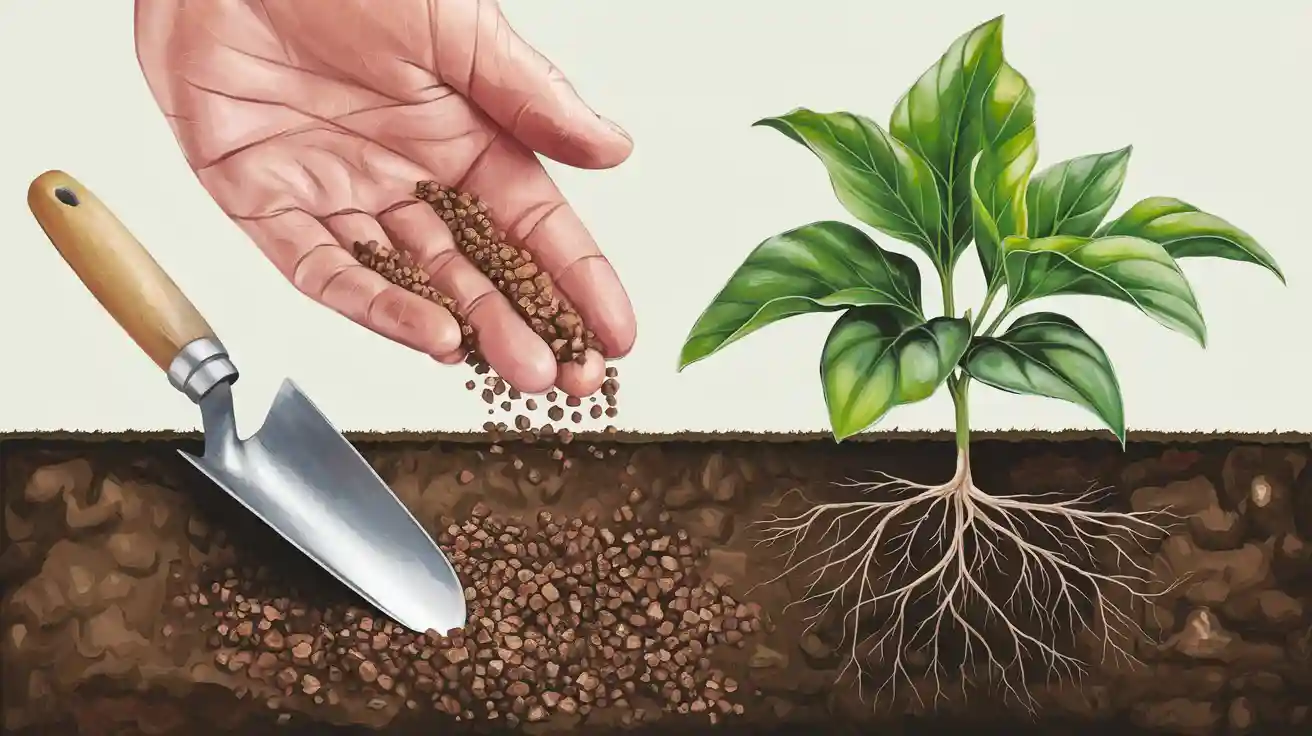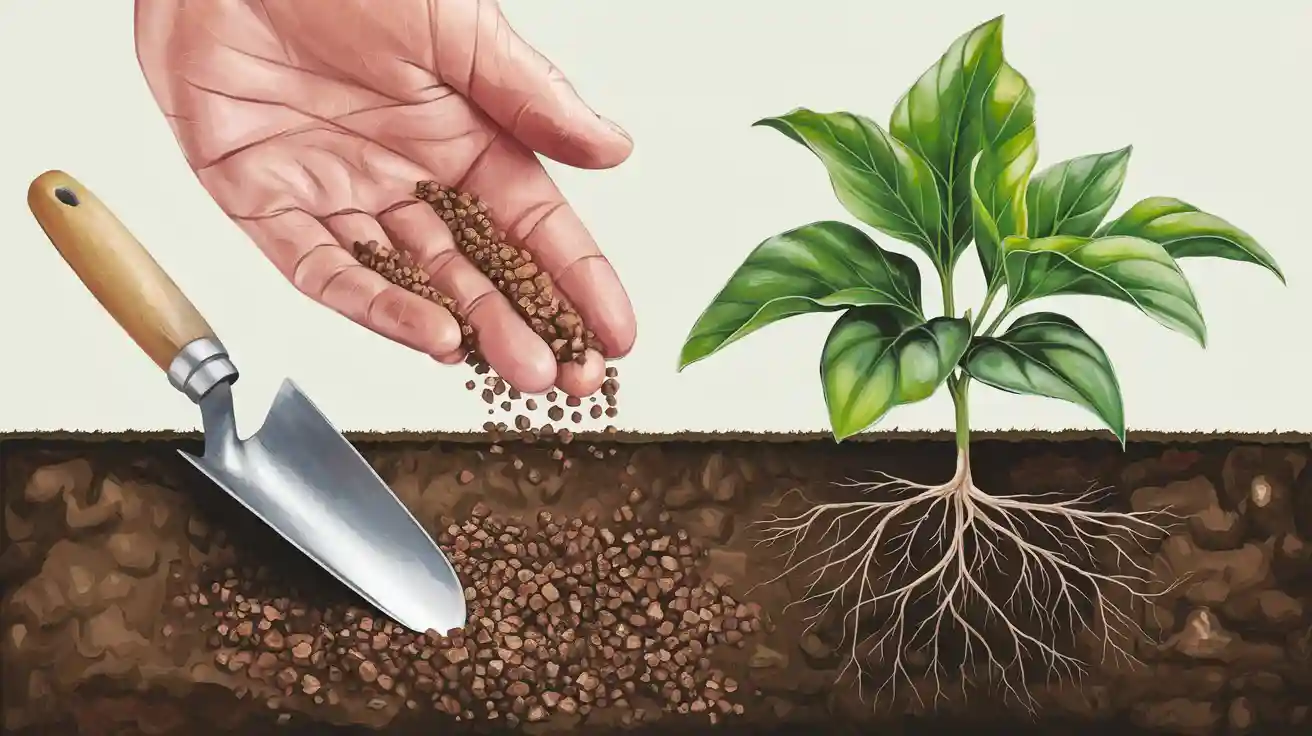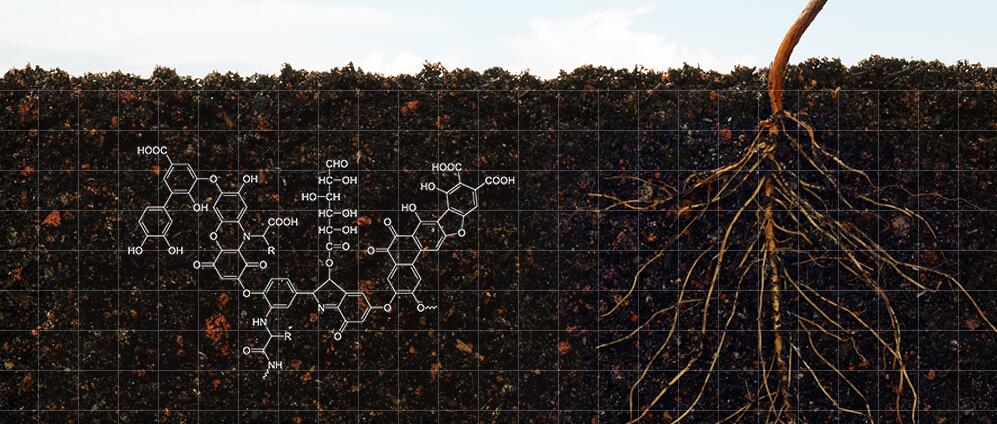
I define humic acid fertilizer as a natural product that improves soil quality and boosts plant growth. This fertilizer comes from decomposed organic matter, making it an attractive choice for those who want sustainable and chemical-free options. I see more gardeners and farmers using it each year because of its proven results and growing market value.
| Metric | Value | Significance |
|---|---|---|
| Market size (2024) | $2.5 billion | Shows widespread adoption |
| Growth rate (2026-2033) | 8.5% CAGR | Indicates rising demand for natural input |
Key Takeaways
- Humic acid fertilizer is a natural product that improves soil quality and helps plants grow stronger and healthier.
- It comes from organic materials like peat and leonardite, with different types offering unique benefits for soil and plants.
- Applying humic acid improves soil structure, nutrient uptake, and supports beneficial soil microbes for better plant health.
- Using humic acid fertilizer can increase crop yields, improve resistance to stress, and boost overall plant growth.
- This fertilizer helps reduce nutrient runoff and stores carbon in soil, making farming more environmentally friendly.
- Choose the right form—liquid, granular, or powder—and follow recommended application methods for best results.
- Avoid overusing humic acid fertilizer to prevent soil damage and poor plant growth; always follow dosage guidelines.
- Combining humic acid with other fertilizers and good soil practices leads to stronger plants and healthier soil.
What Is Humic Acid Fertilizer
Definition
I define humic acid fertilizer as a soil amendment made from natural organic matter that has decomposed over thousands of years. This fertilizer contains a group of complex molecules called humic substances. These substances play a vital role in soil health and plant nutrition. When I apply humic acid fertilizer, I notice it improves nutrient retention, water holding capacity, and overall soil structure.
Note: Scientific studies confirm that humic acid is a dark-brown substance, soluble in water at higher pH, and has a higher molecular weight than fulvic acid. It retains ionized nutrients and water in soil, especially in sandy soils, and prevents nutrient leaching. The electronegativity of humic acids allows them to hold cations like magnesium, calcium, and iron, making these nutrients more available to plant roots. Even small amounts can significantly increase crop yield.
I have seen that humic acid fertilizer not only enhances nutrient uptake but also stimulates microbial activity in the soil. This leads to healthier roots and stronger plants.
Sources
Humic acid fertilizer comes from a variety of natural sources. The quality and effectiveness of the fertilizer depend on the origin of the raw material and the extraction method used. I often choose products based on their source, as this can influence the nutrient content and purity.
| Aspect | Details |
|---|---|
| Natural Sources | Peat, lignite, leonardite, organic-rich soils, compost, vermicompost, seaweed, algae, biomass, organic wastes, sediments |
| Peat | One of the oldest and most popular sources; formed by partial decomposition of plant material in waterlogged, acidic conditions; high humus content |
| Leonardite | Weathered form of lignite; rich in humic acids; brown to black soft coal-like substance |
| Lignite | Low-rank coal; source especially when weathered; higher carbon content than peat |
| Other Sources | Organic-rich soils (forests, marshes), compost, vermicompost, certain seaweed and algae species, biomass and organic wastes from agriculture and forestry, lake and marine sediments |
| Extraction Methods | Primarily alkaline extraction followed by acid precipitation; alkaline extraction assisted by ultrasound is efficient |
| Emerging Methods | Hydrothermal, enzymatic, microwave-assisted, supercritical fluid extraction, ultrasonic waves; aim to improve yield, purity, and sustainability by reducing hazardous chemicals and energy consumption |
| Importance of Source | Quality and characteristics of source material influence extraction and purification processes to produce high-quality humic acids suitable for agriculture |
I prefer humic acid fertilizer derived from leonardite or peat because these sources tend to have higher concentrations of humic substances. Modern extraction methods, such as ultrasound-assisted alkaline extraction, help produce purer and more effective fertilizers.
Types
Humic substances in fertilizers fall into three main categories. Each type has unique properties and benefits for soil and plants.
Humic Acid
Humic acid forms the backbone of most humic acid fertilizer products. I recognize it by its dark color and its ability to dissolve in water at higher pH levels. Humic acid molecules have a high molecular weight and a strong negative charge. This allows them to bind with essential nutrients and transport them to plant roots. They also improve soil structure by increasing cation exchange capacity and water retention. I have observed that humic acid enhances root growth and helps plants cope with stress.
- Humic acid holds cations such as magnesium, calcium, and iron, making these nutrients more available to plants.
- It stimulates microbial activity, which boosts nutrient cycling and plant health.
- Studies show that humic acid increases the uptake of iron, sulfate, and phosphate by plants.
Fulvic Acid
Fulvic acid is a smaller, lighter molecule compared to humic acid. It dissolves in water at all pH levels. I use fulvic acid when I want rapid nutrient delivery to plants. Its low molecular weight allows it to penetrate plant cells easily. Fulvic acid acts as a chelator, binding micronutrients and making them more accessible to plants. It also helps transport nutrients across cell membranes, improving overall plant nutrition.
Humin
Humin is the least soluble and most stable component of humic substances. I find it in the solid fraction of organic matter. Humin does not dissolve in water at any pH. While it does not directly supply nutrients to plants, it plays a crucial role in building long-term soil structure. Humin improves soil aeration, water retention, and resistance to erosion. I value humin for its ability to create a healthy environment for roots and soil microbes.
Tip: When choosing a humic acid fertilizer, I always check the label for the ratio of humic acid, fulvic acid, and humin. Each component offers different benefits, so the right balance depends on my soil type and crop needs.
How It Works
Soil Structure
When I apply humic substances to soil, I notice a visible improvement in its structure. The soil becomes more crumbly and easier to work with. This change happens because humic substances act as natural biostimulants. They encourage plant roots to grow deeper and stronger. As roots expand, they create channels in the soil, which improves aeration and water movement. I have seen that these changes help prevent soil compaction and erosion. Research confirms that humic substances enhance soil structure by promoting root development and increasing nutrient availability through chelation. Both laboratory and field studies show that the chemical makeup of humic substances, along with how and when I apply them, play a big role in their effectiveness. These substances trigger anatomical and biochemical changes in roots, which leads to better soil condition and healthier plants.
Nutrient Uptake
I rely on humic substances to help my plants absorb nutrients more efficiently. They bind with minerals in the soil, making them easier for roots to take up. This process, called chelation, ensures that essential elements like nitrogen, phosphorus, and potassium remain available to plants instead of washing away. I have observed that crops such as wheat, tomato, and lentil respond with faster growth and greener leaves after application. Scientific studies support these observations. They show that humic substances stimulate plant metabolism and enzyme activity, which boosts the biosynthesis of amino acids and improves photosynthesis. As a result, plants produce more biomass and yield. I also notice that the fertilizer increases nitrogen availability, which is vital for flowering and seed development. These improvements in nutrient uptake lead to stronger, more productive plants.
Microbial Activity
Healthy soil depends on a thriving community of microbes. I use humic substances to support this microbial life. They provide food sources like organic acids and amino acids, which help beneficial bacteria and fungi multiply. After application, I often see an increase in soil enzyme activity and a richer diversity of microbes. Studies show that humic substances alter the structure of soil microbial communities and promote their growth. This boost in microbial activity improves nutrient cycling, making more nutrients available to plants. It also helps plants tolerate stress from drought or disease. By supporting soil microbes, I create a more resilient and fertile environment for my crops.
Benefits of Humic Acid Fertilizer
Plant Growth
I have seen firsthand how humic acid fertilizer acts as a powerful biostimulant for plant growth. When I apply it, I notice stronger stems, greener leaves, and more vigorous root systems. This fertilizer helps plants absorb nutrients more efficiently, which leads to faster and healthier development. I often observe that treated plants show improved resistance to stress, such as drought or disease.
- In my experience, crops like cotton and sweet basil respond with increased stem diameter, leaf area, and overall biomass.
- I have read studies where humic acid fertilizer increased peanut yield by up to 78% over three years, while also raising fat and protein content in the harvested peanuts.
- I see that humic acid enhances photosynthetic enzyme activity, which boosts energy production and growth.
These results confirm that humic acid fertilizer supports robust plant development across a wide range of crops.
Soil Health
Healthy soil forms the foundation of productive agriculture. I use humic acid fertilizer to improve soil structure and fertility. After repeated applications, I notice the soil becomes more crumbly and easier to work with. The organic matter content rises, which helps retain water and nutrients. I also observe an increase in beneficial soil microbes, which play a key role in nutrient cycling.
- Over several years, I have measured higher levels of total nitrogen, phosphorus, potassium, and organic matter in soils treated with humic acid.
- Soil enzyme activities, such as urease and sucrase, increase, indicating better soil biochemical function.
- High-throughput sequencing in research shows that bacterial diversity may decrease, but fungal diversity rises, creating a healthier soil ecosystem.
These changes make the soil more resilient and productive, supporting plant health in the long term.
Crop Yield
Yield improvement remains one of the most important benefits I seek from any fertilizer. With humic acid fertilizer, I consistently achieve higher yields in both field and greenhouse settings. I have seen sweet basil and coriander produce more fresh and dry biomass after treatment. Cotton plants develop more bolls and larger leaves, which translates to greater harvests.
| Crop | Year | Treatment | Yield Increase Compared to Reference Fertilizer (RF) |
|---|---|---|---|
| Wheat | 2019-2020 | Medium/High Organic Fertilizer, Traditional | 36.4%, 50.6%, 41.5% (p < 0.05) |
| Maize | 2018-2020 | High Organic Fertilizer, Traditional | 34.7%–47.2% (p < 0.05) |
I have also noticed that humic acid fertilizer improves nutrient retention in the topsoil, which reduces the risk of nutrient loss and environmental damage. Studies show that this fertilizer can lower greenhouse gas emissions and decrease the carbon footprint of farming. These benefits make humic acid fertilizer a valuable tool for sustainable agriculture.
Environmental Impact
When I consider the environmental impact of my fertilizer choices, I always look for products that support sustainability. I have found that using natural soil amendments can help reduce the negative effects of conventional farming. By choosing organic options, I contribute to healthier ecosystems and lower pollution levels.
One of the main advantages I see is the reduction of chemical runoff. Traditional fertilizers often leach into waterways, causing algal blooms and harming aquatic life. When I apply organic amendments, I notice less nutrient loss from my fields. This means fewer nitrates and phosphates enter rivers and lakes. Scientific studies confirm that these products help retain nutrients in the soil, which protects water quality.
I also value the way these amendments improve soil carbon content. By increasing organic matter, I help sequester carbon in the ground. This process reduces greenhouse gas emissions and supports climate change mitigation. Research shows that soils treated with organic amendments store more carbon than those managed with synthetic fertilizers alone. I see this as a practical step toward more climate-friendly agriculture.
Another benefit I observe is the promotion of biodiversity. Healthy soils support a wide range of organisms, from earthworms to beneficial microbes. When I use natural products, I notice more earthworm activity and richer microbial communities. These organisms break down organic matter, cycle nutrients, and suppress soil-borne diseases. Their presence creates a balanced ecosystem that supports long-term productivity.
Here are some key environmental benefits I have experienced:
- Reduced risk of water pollution due to lower nutrient runoff
- Increased soil carbon storage, which helps fight climate change
- Enhanced biodiversity in the soil, leading to healthier crops
- Lower reliance on synthetic chemicals, which decreases environmental toxicity
Note: According to recent field trials, farms that switch to organic soil amendments report up to 30% less nitrate leaching and a measurable increase in soil organic carbon within two years.
I believe that making environmentally responsible choices in soil management benefits both my crops and the planet. By focusing on soil health and ecosystem balance, I support sustainable agriculture for future generations.
How to Use Humic Acid Fertilizer
Application Methods
When I choose a humic acid fertilizer, I consider the form that best fits my soil and crop needs. Each type—liquid, granular, and powder—offers unique advantages and requires a specific approach.
Liquid
I often use liquid humic acid for its fast absorption and versatility. Here is my step-by-step process for applying it:
- I dilute the liquid concentrate according to the manufacturer’s instructions. For most products, I mix 1 ounce per gallon of water.
- I use a garden sprayer or hose-end sprayer to apply the solution evenly across the soil or directly onto plant leaves.
- I schedule applications once a month during the active growing season. I adjust the frequency based on my soil’s condition and the needs of my plants.
- I prefer to apply early in the morning or late in the evening. This timing helps prevent evaporation and ensures the product reaches the root zone.
- After spraying, I lightly water the area to help the humic acid move deeper into the soil.
- I calculate the dosage based on the area I want to treat. For lawns, I use 1-2 ounces per 1,000 square feet.
- I regularly test my soil to monitor nutrient levels and adjust the application rate as needed.
Tip: I always check the product label for specific dilution rates and safety instructions.
Granular
Granular humic acid works well for larger areas and long-term soil improvement. I follow these steps:
- I broadcast the granules evenly over the soil surface, using a spreader for uniform coverage.
- I incorporate the granules into the top few inches of soil with a rake or tiller.
- I water the area thoroughly after application to activate the granules and help them break down.
- I apply granular humic acid at the start of the planting season or when preparing new beds.
Granular forms release humic substances slowly, providing ongoing benefits throughout the growing season.
Powder
Powdered humic acid offers flexibility for seed treatments and custom blends. My method includes:
- I mix the powder with water to create a solution for soil drenching or foliar spraying.
- For seed treatment, I dust seeds lightly with the powder before planting. This helps boost germination and early root development.
- I ensure the powder dissolves completely to avoid clogging sprayers or uneven application.
Powdered products allow me to tailor the concentration for specific crops or soil conditions.
Best Practices
To maximize the benefits of humic acid fertilizer, I follow these best practices:
- I always prepare the product according to the manufacturer’s guidelines, ensuring the correct concentration—usually between 0.005% and 0.01%.
- I integrate humic acid into my regular fertilizer program. This combination improves nutrient uptake, especially for nutrients like phosphorus that do not move easily in soil.
- I use activated humic acid products when possible. These have higher bioactivity and deliver better results.
- I time my applications to match plant growth stages. Early growth and pre-flowering periods are ideal.
- I adapt my approach to different soil types. Sandy soils may need more frequent applications, while clay soils retain humic substances longer.
- I monitor my soil with regular testing. This helps me adjust the dosage and avoid unnecessary applications.
- I water after each application to help the humic acid reach the root zone.
Note: Proper balance is key. Too little humic acid may not show results, but too much can harm plants and soil.
Common Mistakes
Over the years, I have learned to avoid several common mistakes when using humic acid fertilizer:
- Applying too much product can cause a black, solid layer to form on the soil surface. This layer hardens the soil and blocks seed emergence.
- Excessive use increases soil salt content and alkalinity, which can harm plant growth and reduce survival rates.
- Overapplication wastes resources and may hinder the soil’s ability to absorb nutrients.
- I always stay within the recommended dosage, usually around 20 grams per kilogram of soil. Exceeding this amount raises the risk of negative effects.
- I avoid applying humic acid during the hottest part of the day to prevent rapid evaporation and reduced effectiveness.
⚠️ Alert: I have seen alfalfa seeds fail to germinate when the soil surface hardened after too much humic acid. Always measure carefully and follow guidelines.
By following these methods and best practices, I ensure that my plants and soil benefit from humic acid fertilizer without risking damage or waste.
Challenges and Misconceptions
Overuse Risks
I have learned that more is not always better when it comes to soil amendments. Overusing these products can create several problems. When I apply too much, I sometimes see a black crust form on the soil surface. This layer can block air and water from reaching plant roots. In some cases, seeds fail to sprout because the soil becomes too hard. I also notice that excessive use can increase soil salt levels. High salt content stresses plants and reduces their ability to absorb water. I always measure carefully and follow recommended rates. I check my soil regularly to avoid buildup and keep my plants healthy.
⚠️ Alert: Overapplication may lead to stunted growth, poor germination, and even plant death. Always read the label and start with the lowest effective dose.
Myths
I often hear myths about these soil amendments. Some people believe they act as a complete replacement for all other fertilizers. In my experience, this is not true. These products improve nutrient uptake, but they do not supply all the nutrients plants need. I still use balanced fertilizers to provide nitrogen, phosphorus, and potassium. Another myth claims that results appear overnight. I have found that improvements in soil and plant health take time. Patience and consistency matter. Some gardeners think these products work in every soil type without adjustment. I always test my soil first and adapt my approach based on its unique needs.
Here are a few common myths I encounter:
- “It fixes all soil problems instantly.”
- “It replaces the need for any other fertilizer.”
- “It works the same in every climate and soil.”
Tip: I combine these amendments with good soil management practices for the best results.
Compatibility
I pay close attention to compatibility when adding new products to my routine. Not all soil amendments mix well with every fertilizer or pesticide. I have seen some products lose effectiveness when combined with strong acids or alkaline solutions. I always check the label for compatibility notes. When in doubt, I perform a small test on a limited area before treating my entire garden or field. I also avoid mixing with products that contain heavy metals or high concentrations of salts. These combinations can harm soil microbes and reduce plant health.
| Product Type | Compatibility Notes |
|---|---|
| Organic Fertilizers | Usually safe, but check for salt content |
| Chemical Fertilizers | Test first; avoid strong acids or bases |
| Pesticides | Apply separately if unsure |
| Soil Conditioners | Mix only if recommended by manufacturer |
Note: I always read product instructions and consult with experts if I have questions about mixing or timing.
Real-World Use
Home Gardens
I have seen many home gardeners achieve impressive results by incorporating organic amendments into their routines. When I combine humic substances with compost, I notice a significant boost in plant health and productivity. My experience aligns with research findings, which highlight several key benefits:
- Nutrient uptake improves, especially for nitrogen, phosphorus, and potassium. Plants use these nutrients more efficiently because of gradual release.
- Microbial biomass in the soil increases. This change supports better root and shoot growth, even in challenging conditions.
- Root length and pod yield reach their peak when I apply both compost and humic substances at recommended rates.
- Green pod yields can rise to nearly 790 kg per hectare under optimal treatment.
- The synergy between humic substances and beneficial soil microbes, such as Bacillus and Pseudomonas, enhances nutrient absorption and overall plant vigor.
- Organic amendments help retain soil moisture and improve quality, which proves especially valuable in arid or drought-prone gardens.
I find that these practices not only increase yields but also build resilience against water scarcity and poor soil structure. By focusing on soil health, I create a thriving environment for vegetables, herbs, and flowers.
💡 Tip: I always recommend combining humic substances with compost for best results, especially in home gardens facing tough soil or climate conditions.
Agriculture
On a larger scale, I have observed that farmers benefit from using humic substances to improve both yield and soil quality. Research shows that these products enhance nitrogen use efficiency by reducing losses from leaching and emissions. This improvement leads to higher crop yields and a smaller environmental footprint. I have seen how humic substances act like plant hormones, stimulating root growth and enzyme activity. These changes help crops absorb nutrients more effectively.
I read a 2022 study by Kong and colleagues. They found that combining humic substances with urea fertilizer increased nitrogen use efficiency and crop yield by minimizing nitrogen loss. This approach outperformed using urea alone. In my own work, I have noticed similar results, especially in cereal and legume crops.
Lenssen and his team reported that applying a formulated humic product in soybean fields led to higher yields. I have seen this effect in my own trials with soybeans and other legumes. The plants develop stronger roots and produce more pods.
In northwestern China, scientists demonstrated that humic substances stabilize heavy metals in contaminated soils. This process improves soil structure and nutrient absorption, resulting in healthier maize plants and reduced cadmium uptake. I value this benefit because it supports sustainable farming and food safety.
I also observe that humic substances improve soil aggregate stability and nutrient availability. These changes make the soil more fertile and productive over time. In saline-alkali soils, I have seen better salt leaching and reduced nitrogen loss, which helps crops thrive in difficult environments.
📈 Note: I always monitor soil conditions and adjust application rates to match crop needs. This practice ensures consistent results and long-term soil health.
I have seen that understanding what humic acid fertilizer is, how it works, and its benefits can transform soil and plant health. Safe, consistent use improves nutrient availability, boosts plant growth, and reduces heavy metal risks. I encourage you to observe results over time and explore these resources for deeper knowledge:
- International Humic Substances Society for research and standards
- EU Fertilizer Regulation (EC) No 2003/2003 for safety guidelines
- Studies on humic substances and phosphate efficiency
| Aspect | Findings |
|---|---|
| Plant Growth | Alfalfa root biomass increased 18x; barley root biomass increased 4x with combined use |
| Soil Fertility | Cation exchange capacity rose by 38%; organic carbon by 36% |
| Heavy Metal Reduction | Soil cadmium dropped by 25% |
FAQ
What is the best time to apply humic acid fertilizer?
I apply humic acid fertilizer early in the growing season or before planting. This timing helps roots absorb nutrients as they develop. I also find that applying before rainfall or irrigation improves effectiveness.
Can I mix humic acid fertilizer with other fertilizers?
I often combine humic acid with balanced NPK fertilizers. This combination improves nutrient uptake. I always check compatibility on product labels and test a small area first. Some chemical fertilizers may reduce the benefits if mixed directly.
How often should I use humic acid fertilizer?
I usually apply humic acid once a month during the active growing season. For heavy soils, I reduce the frequency. I monitor plant response and adjust the schedule as needed. Overuse can harm soil and plants.
Is humic acid fertilizer safe for all plants?
I use humic acid on vegetables, flowers, lawns, and trees. Most plants respond well. I always follow recommended rates and avoid overapplication. Sensitive seedlings may need lower doses.
Will humic acid fertilizer change soil pH?
I have not seen significant changes in soil pH after using humic acid. It acts as a buffer, helping stabilize pH. I still test my soil regularly to ensure optimal conditions for plant growth.
Can I use humic acid fertilizer in hydroponics?
I sometimes add liquid humic acid to hydroponic systems. It improves nutrient uptake and root health. I use only products labeled for hydroponics and follow manufacturer instructions closely.
Does humic acid fertilizer have an odor?
Most humic acid fertilizers have a mild, earthy smell. I find the odor fades quickly after application. The scent comes from natural organic matter and does not linger in the garden.
How should I store humic acid fertilizer?
I store humic acid products in a cool, dry place away from direct sunlight. I keep containers tightly sealed to prevent moisture and contamination. Proper storage maintains product quality and effectiveness.






